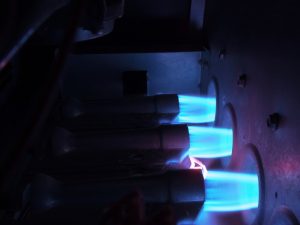 We get it, when you see a professional Chicago HVAC company use the words “danger” and “heater” in the same post, it can be a little disconcerting! Not to worry though, heating systems—rather, gas-powered heating systems—are not inherently dangerous devices. This is something we must clear up right now—we don’t want you to feel like you’re constantly in danger just because you utilize your natural gas lines.
We get it, when you see a professional Chicago HVAC company use the words “danger” and “heater” in the same post, it can be a little disconcerting! Not to worry though, heating systems—rather, gas-powered heating systems—are not inherently dangerous devices. This is something we must clear up right now—we don’t want you to feel like you’re constantly in danger just because you utilize your natural gas lines.
However, it’s extremely important for us to tell you that just like powerful appliances that create combustion gases, a furnace can potentially create health hazards if it is not properly maintained.
That being said, we want to warn you about the most common cause for a gas furnace (at least, an aging one—in most cases) to become unsafe—because of a cracked heat exchanger. When we say aging, we mean about 15 years old. If your system is nearing this age, we’d recommend looking into a replacement soon regardless of whether you have a cracked heat exchanger or not, as an aging heater simply can’t perform as efficiently as it did near the beginning of its lifespan.
“So, What Is a Heat Exchanger?”
Great question! This component is a very important part of your gas-powered furnace. It’s literally the area where the heat from the combustion gas transfers to the air from the blower fan that moves into your ventilation system or your air ducts. These combustion gasses can’t come into direct contact with the air, otherwise unhealthy fumes would end up going into the living spaces.
Rather, the combustion gas enters the heat exchanger, which is a metal, clam-shaped chamber. The heat of the combustion gas raises the temperature of the metal, and as the air from the blower passes around it, heat transfers to it. Essentially, the heat exchanger is where the furnace heats the air.
The Danger of a Cracked Heat Exchanger
A damaged heat exchanger is a problem as it enables the exhaust fumes inside the exchanger to leak into your indoor air. The most toxic of these exhaust fumes is carbon monoxide, which can cause severe health problems. The furnace typically sends the fumes out a flue, but a crack may allow some to seep out.
What causes this though? Corrosion. What happens is that the reaction between the combustion gas and metal over time causes the metal to weaken. This is extremely important to watch out for in an aging furnace. It’s also important to remember that even a small crack is a problem, as it expands with heat (in fact when it’s cooled off, the crack can be completely invisible to the naked eye).
You can usually detect a cracked heat exchanger by a clicking sound coming from the furnace after the blower fan shuts down. If you do notice this, or think you hear a similar sound, it’s always better to be safe than sorry, and give our pros a call!


